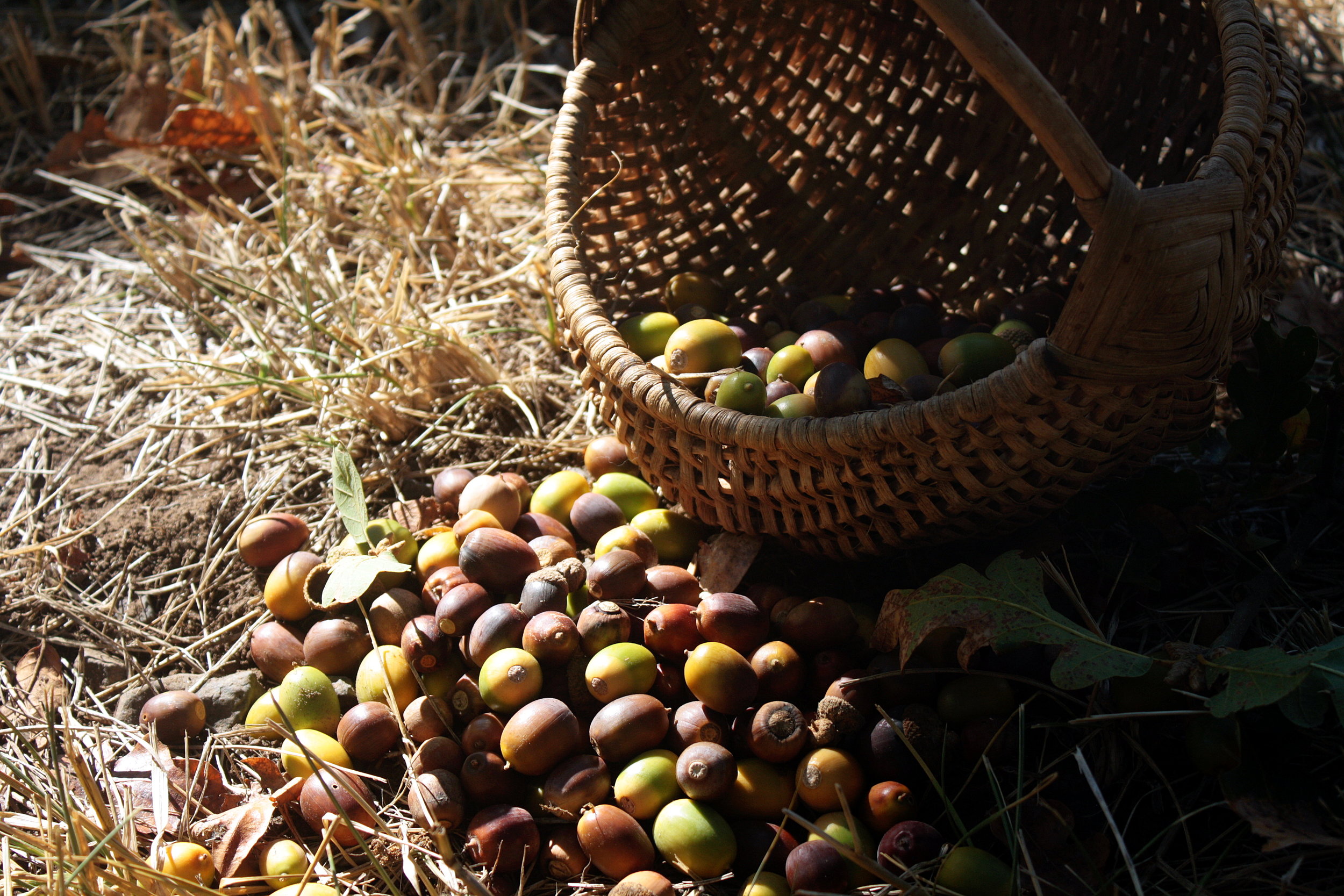Of Acorns and Oak Galls
by Sarah Deumling, Zena visionary, owner and manager
“When the oak is felled the whole forest echoes with its fall, but 100 acorns are sown in silence by an unnoticed breeze.”
With the waning of August, we begin to hear the first pinging of acorns on the red metal roofs of the barns. And with the first blustery little September stormlet, the leaves begin to fall, bringing with them lovely little spherical, speckled, autumn-colored oak galls attached to their undersides. I, at the waning age of 70, still cannot resist my childhood urge to step on them in the hope of a satisfying sharp "POP" emanating from the small percentage that are still intact.
The others have a small hole where the wasp has exited so give only a dull crunch instead of that lovely "POP." In the spring the mother wasp laid her egg on the leaf bud just as it unfurled. Mysteriously the oak leaf created the spherical gall filled with a nutritious webbing around the egg. At some point the egg hatched into a worm that was nourished by the contents of the gall - if not devoured by one of many possible predators. By fall the worm - by now the daughter wasp - ate herself free through a small hole in the gall into the wide world outside.
This year, oak gall time was even more fun than usual because Asa, son of Ben and Emily, is 18 months old and trying hard to say “POP". While eager, he is not quite able to coordinate his small foot to tromp adequately on a gall. Instead he picks them up and crunches them in his hand with great satisfaction.
The first acorns that fall are generally small and defective, but it remains hard to resist collecting them – maybe it will be a poor crop, maybe the jays and the squirrels will beat us to them. They are such fun to find among the leaves, to hold, to admire – especially those with their perky caps still covering their bald heads, maybe even with a leaf attached. We fill our pockets – or hats – on the way to the mill and back. As September days add up and the breezes blow harder, the acorns are bigger and more numerous. They fill the containers more quickly. Afternoon walks at toddler speed are perfect – plenty of time to collect all the acorn bounty while he discovers a stick or a rock or a slug and once in a while proudly adds an acorn to the rapidly filling basket.
Last year, we soaked the acorns, discarded those that floated to the top and delivered the remainder to the nursery to grow us the seedlings we will plant this winter to replace dying fir trees.
This year, our buckets of acorns went to an architect friend who has set aside his practice of architecture to try his hand at producing acorn and grape seed (a by-product of wineries) oil. We are eager to sample the results of his labor.
Over the millenia humans have inhabited the earth acorns have been a staple food source for many cultures (Balano cultures) including a reputedly excellent oil. Acorn bread, acorn soup, and acorn jelly are all reported to be both filling and nutritious, if not particularly tasty. In this time of uncertainty it is most reassuring to realize this part of the vast, untapped abundance of our oak forest.
Fun Facts:
An oak tree must be 15 – 30 years old to produce acorns.
A large oak tree can produce 300 – 500 lbs of acorns.
The only oak native to the Willamette Valley is the Oregon White Oak or Quercus garryana.
The Oregon White Oak grows from Central California north to Vancouver Island with the Willamette Valley as the epicenter.
“When I leave this world I hope I leave a better place,
Where deeds I’ve done and paths I’ve trod have helped the human race.
Where seeds I’ve sown will blossom still and trees I’ve planted grow,
From acorns into mighty oaks, I hope I’ve made it so.”



